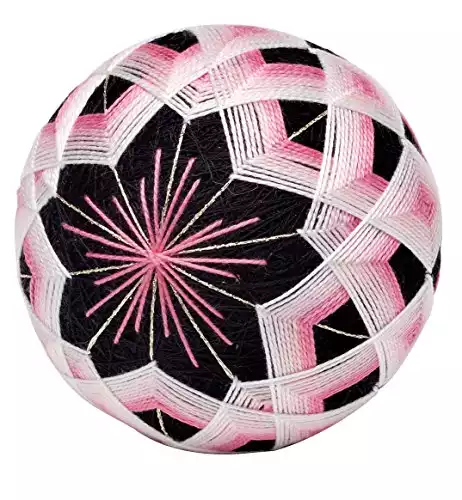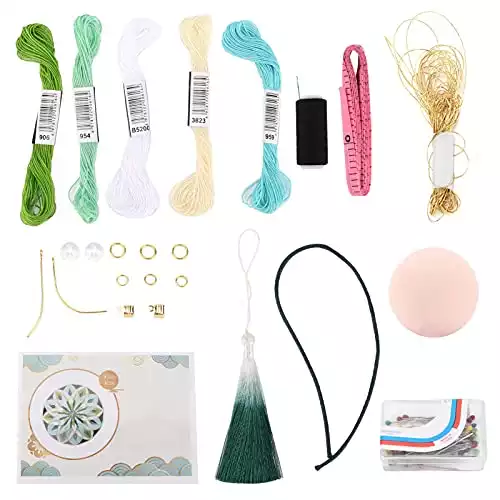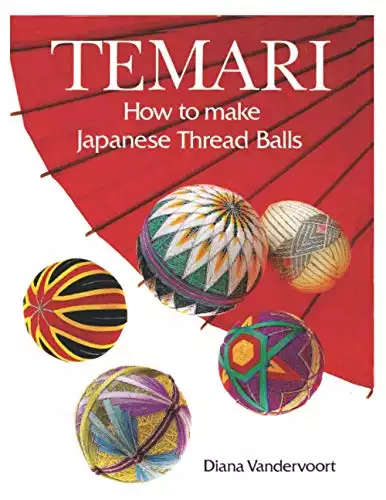The Japanese Temari balls are ancient fork craft originating in China.
The term “Temari is coined from two Japanese words — “te” and “mari’. The latter means hand while “Mari” stands for ball. Temari, thus loosely translates to “handball.”
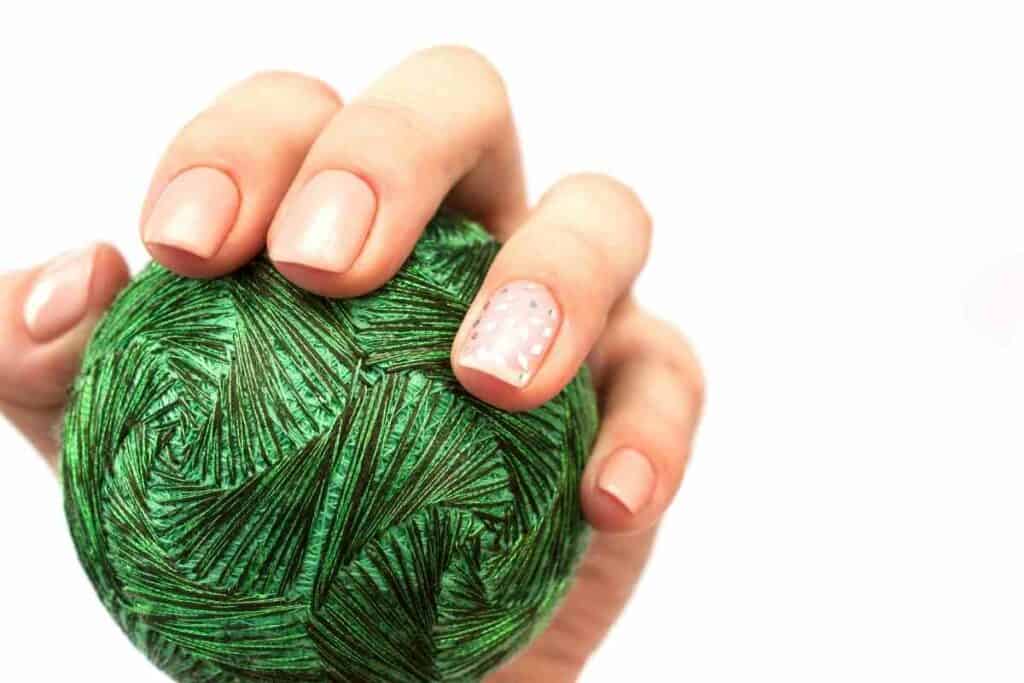
Temari was first popular in Japan as Kemari during the Heian period. However, the sport was first played in China as Cuju — an ancient Chinese sport resembling kickball.
Temari was introduced in Japan in the 7th century A.D. as a treasured art form mothers gifted their female children as per the Temari traditions.
Table of Contents
The Meaning Behind Temari
Mothers’ best wishes to their daughters were disguised in the Temari weavings or hidden in little paper strips.
Although the children may never decipher the wishes contained in the Temari balls, they knew these art pieces symbolized good intention and deep motherly love.
The Japanese also gave Temari to children or friends to show a deep appreciation of friendship and loyalty. The brilliant colors symbolize wishes for a happy life for the recipient.
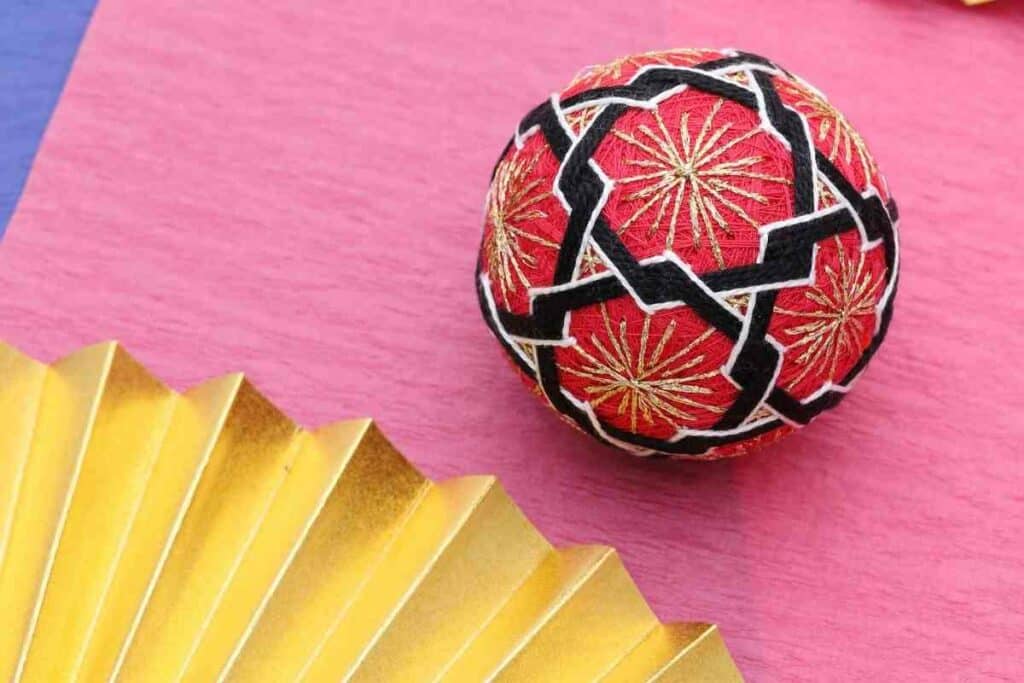
Temari has evolved over the years in weaving designs and applications, yet its legacy lives on under the careful preservation of the Japanese Temari Association.
This post will explore the rich history of the Japanese Temari balls, including the Temari game revolution to what it is today.
|
3.8
|
3.7
|
4.3
|
|
$35.00
|
$11.84
|
$22.58
|
What are Japanese Temari Balls?
Temari balls are tiny spherical toys crafted into beautiful pieces of art using silk scraps.
Traditionally – Mothers and grandmothers competed in making the best Temari, which they later gave to young girls to show their love or convey cultural messages such as wishes for a happy life or prosperity.
They were also given to a friend to show a deep appreciation of friendship and loyalty. Finally, girls played with Temari balls to mark New Year Celebrations.
Today, Tamari traditions are no longer practiced as widely as before.
Still, Temari art pieces in Japanese museums and Temari shops sell Temari balls primarily as ornaments.
What is Temari Made of?
Initially, Temari balls were made from herbs and deer skin.
The ancient construction is associated with the Buddhist missionaries from China, India, and Korea.
These missionaries carried their beliefs, culture, and traditional sports—Temari wherever they went.
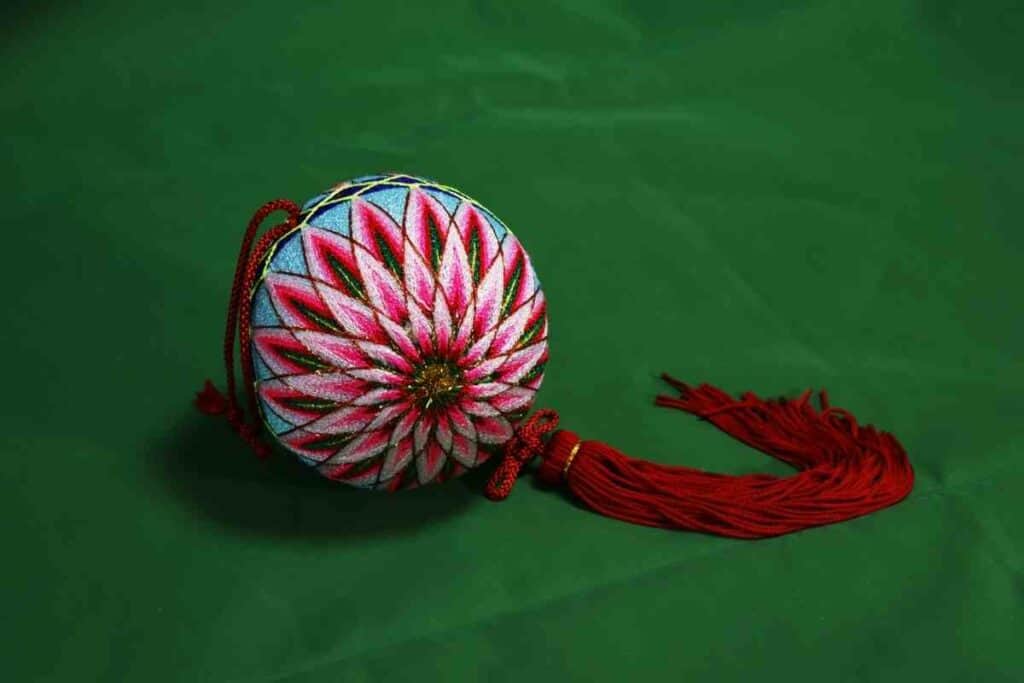
The Japanese noblewomen later introduced the now-famous silk and old kimono scrap Temari balls.
At the beginning of the 17th century, Temari crafters started using cotton to create more spherical and elastic balls.
These balls bounced well, and girls loved playing with them on New Year’s Eve.
As Time Passed – Rubber became more affordable, thus the popularity of rubber Temari balls. Modern crafters now use Styrofoam balls and plastics to make Temari balls, which are then decorated with embroidery.
How is Temari Made?
Temari construction is a skillful art that follows specific crafting principles.
First, the mari is divided into sections using temporary pins and permanently woven threads.
Temari follows three main construction points, including:
- Foundation layout
- Surface division
- Pattern designing
The three standard Japanese Temari divisions are categorized into 10-combination divisions, 8-combination, and simple combinations.
However, Temari balls can be divided further into as little as four divisions or up to 16.
Initially, Temari foundation featured bundled fabric scraps or rice husk pouches. Modern Temari uses Styrofoam balls or plastic to form balls of different sizes.
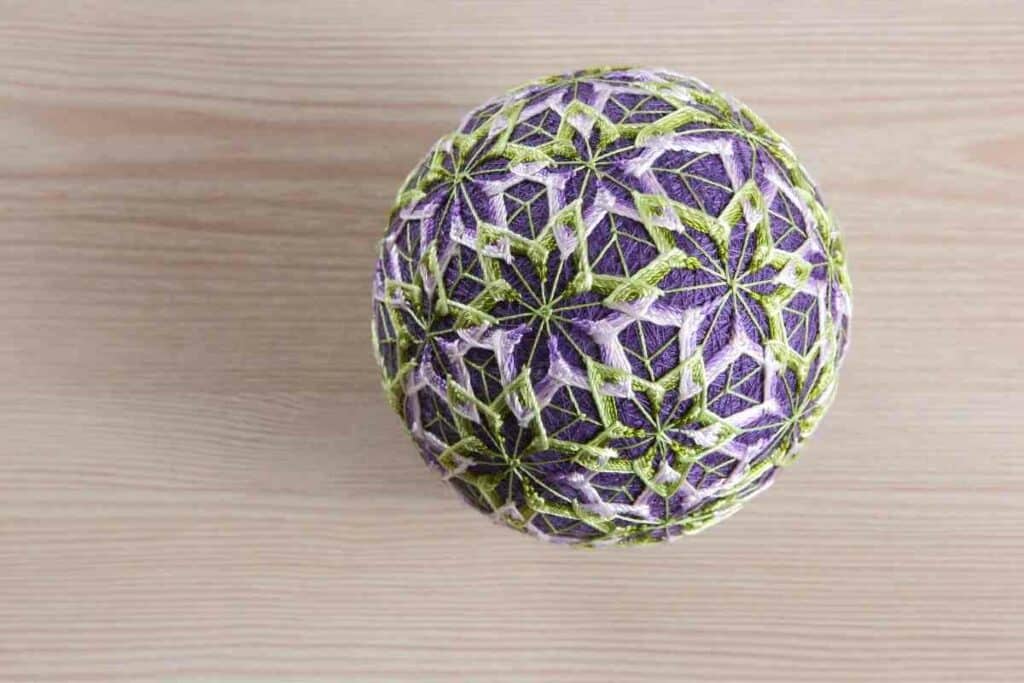
Pins are used to mark the top, bottom, and the ball’s “equator” to resemble the shape of the globe.
Guide threads follow a systematic pattern to form various geometric designs.
Star and diamond shapes are the simplest and most common shapes crafters make by carefully winding colored silk or cotton threads.
A sewing needle is used on complicated designs to weave one thread over the other. Temari artists have creative ways of finishing the weave for a more appealing look.
The most common finishings include a bow-like cord or a loosely hanging thread with a knot at the end.
In the Early Days – Mothers and grandmothers competed in creating beautiful objects of different designs that would be given to daughters ready for marriage to symbolize beauty and perfection.
What are the Different Temari Designs?
Temari is an old game that has existed for ages.
To date, different artists still create unique decorative designs to add to more than 200 officially recognized Temari patterns.
These low-key tiny thread balls can take a completely different pattern or design at the slightest color change or the addition of an extra division.
Most Japanese Temari uses seasonal motifs associated with specific traditional significances.
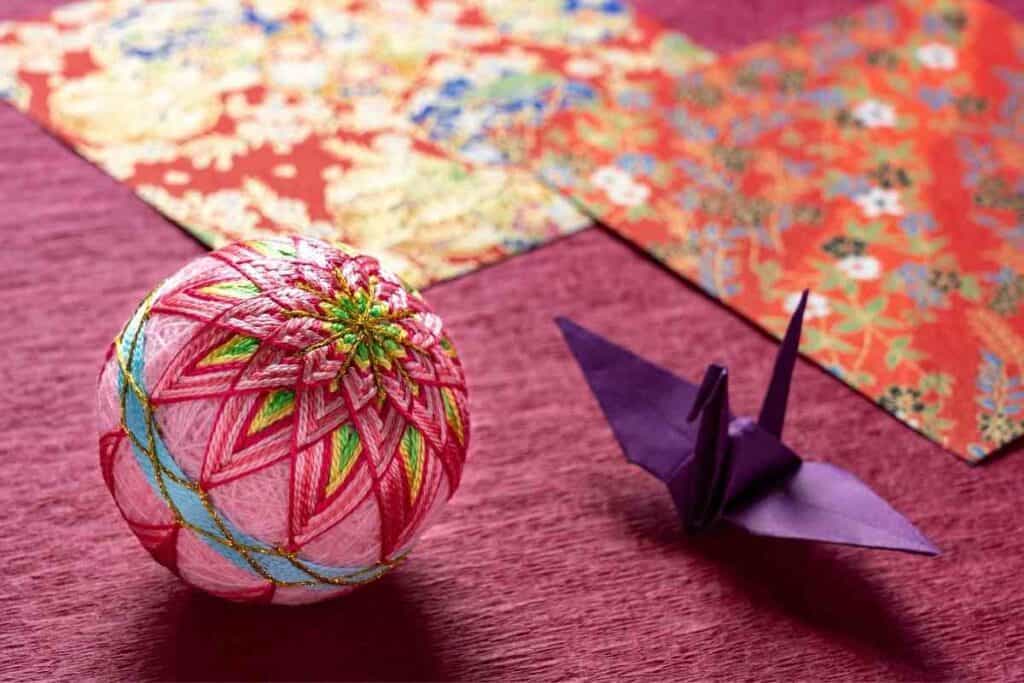
Some of the most famous Japanese seasonal motifs include:
- Sakura is used during spring. The cherry blossoms on the Japanese Cherry tree symbolize a time for renewal and appreciation of nature.
- The tortoise shell patterns on a Temari symbolize sending away evil spirits.
- Bright colors like red and gold are associated with good fortunes and prosperity. The Japanese crafters also associate the 12 divisions on a Temari with luck and wealth.
Many Temari makers have stuck with the traditional crafts that use dyed threads, commonly referred to as the Japanese Indigo.
However, some modern Temari artists are breaking away from these conventional Temari designs for a more diverse approach.
For Instance – It’s common to find Temari for the winter season designed using Christmas holly with inclusions of bright neon colors.
Others take a minimalist approach using a limited palette without incorporating any traditional Temari colors.
The modern Temari balls are more intricate and feature more colorful patterns.
They are mainly used as ornaments and not children’s toys. Still, some Japanese communities give them out to their children as gifts.
Temari Traditions
Temari traditions have evolved over the years.
From construction design to the traditional purposes of the Temari balls, this beautiful art has experienced massive changes.
Like many industries, changes in the Japanese Temari balls are mainly characterized by the growing digitalization and changes in human interests.
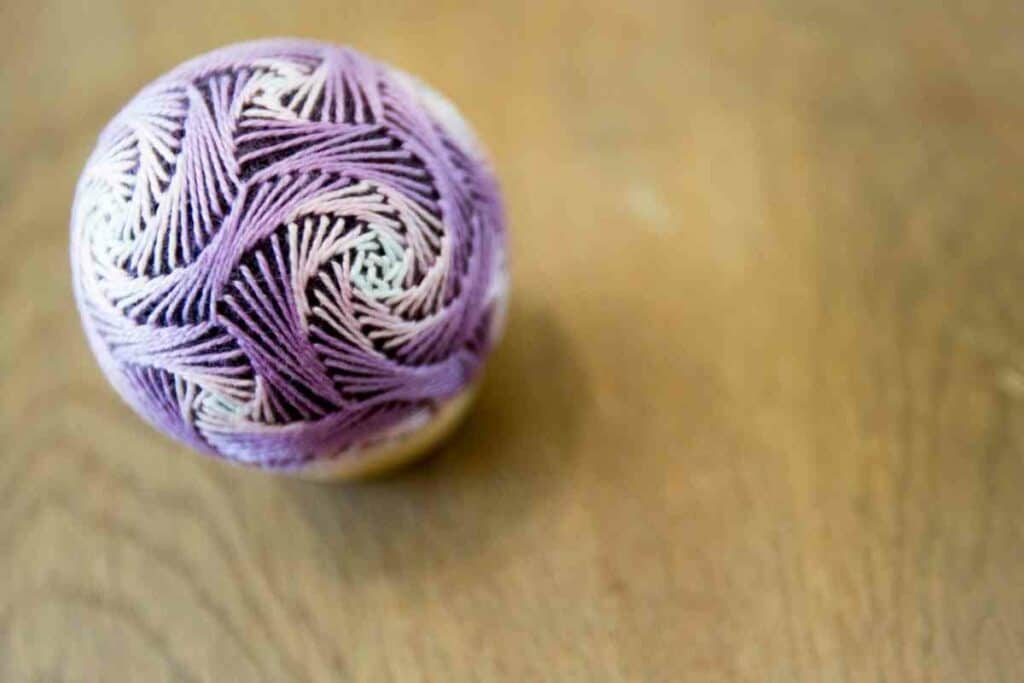
Initially, girls enjoyed playing with the Temari balls, which were kicked high by the side of the foot.
The main goal was to keep the ball as high as possible without hitting the ground. The game focused more on etiquette other than on the outcome.
The Temari balls used during those days looked slightly different from the modern balls.
This is because the balls were mainly made from natural materials and other discarded waste such as old clothing and reusable threads.
Did You Know? The traditional Japanese Temari balls were stiff and bounced high whenever they hit the ground. Therefore, the surrounding natural elements majorly influenced their designs.
Girls would accompany Temari ball games with rhyming children chants, known as Temari-Uta, during the new year celebrations.
Temari gained popularity among the Japanese, and in 1223 A.D., this beautiful art started appearing in different Japanese literature books.
Temari balls were pure gifts from mothers and grandmothers to young girls.
On the other hand, young boys received more masculine presents like the samurai play armors from their fathers.
Temari Traditions Today
The face of Tamari today is different from what it looked like more than 15 centuries ago.
Then, the Japanese ball game departed from its original playful purpose to a traditional decorative art perceived primarily as an ornament.
The introduction of various toys in the early 1960s and the popularity of T.V. viewership changed the Temari ball game. Most children abandoned Temari to try out modern toys.
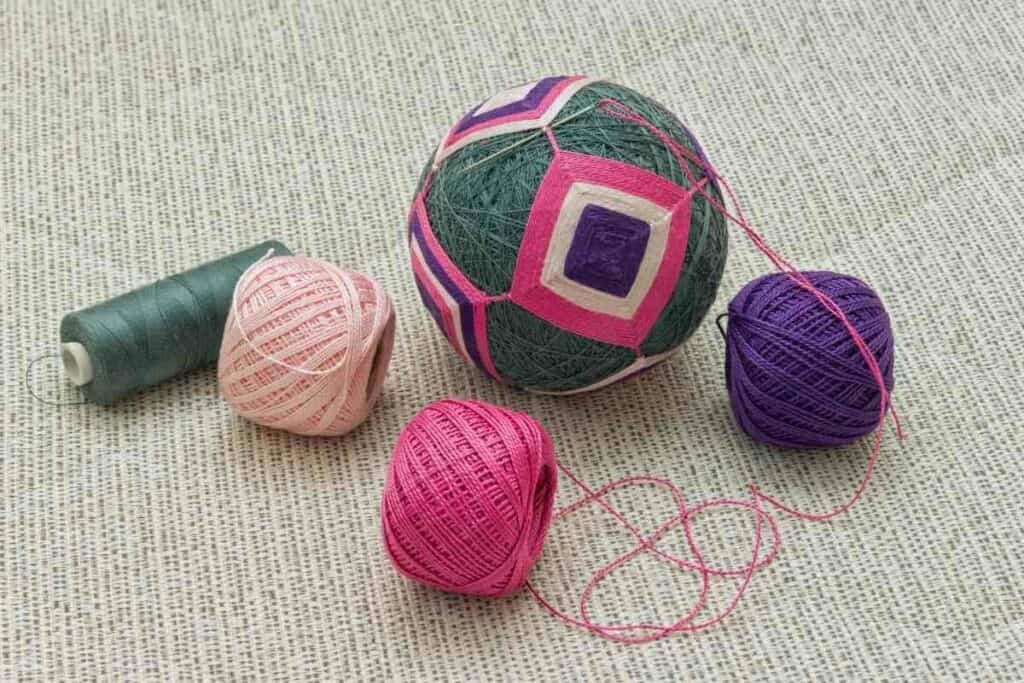
The popularity of the Temari had significantly diminished by 1968. A publication on the state of Temari balls went viral, sparking the interests of Temari lovers.
The desire to bring back the Temari traditions was intense, leading to the formation of The Japanese Temari Association.
J.T.A took over promoting the Japanese Temari balls across the entire nation and abroad. J.T.A’s permanent headquarters are still located in Tokyo, Japan, to date.
In Addition – There’s a J.T.A public, a library, a Temari-making supply shop, and a museum shop. Temari stock in the museum shop comes from Temari students and other professionals from the Association.
These balls are open to the public to buy for those interested in pre-crafted Temari.
In their effort to keep the Temari culture alive, J.T.A also offers a structured course that teaches Temari-making skills to interested individuals.
Unfortunately, despite all these efforts to revive the traditional Temari ball game and its cultural significance, the results have never been impressive.
You’ll hardly hear people talk about the Temari in the Japanese urban setups. However, Temari traditions are still prevalent in the nation’s remote areas like Matsumoto City.
Those who still cherish Temari view them purely as ornaments, not as an art and craft associated with a people’s tradition.
You’ll also spot modern Temari balls incorporated into jewelry or used in phone straps.
Where Can You Buy Temari?
There are three ways to acquire Temari—receive them as gifts, buy them from professional Temari makers, or make your own.
While many people prefer to receive them as gifts, Temari shops in Japan sell fine pieces of Temari craftsmanship by some of the best makers.
Craft your own beautiful cherry blossoms with the Orimupasu Temari Kit TM-5, featuring a unique ring connection design, imported from Japan and created by Orimupasu.
Such shops sell a wide range of traditional Temari made from naturally dyed threads.
They also stock Temari tools for DIYers and hold in-store workshops that teach Temari-making art in English and Japanese.
Temari kits and complete balls are also available online for non-Japanese nationals who want to experience their beauty.
How to Make Your Own Temari Balls
Temari-making is a relaxing activity anyone, especially women with a passion for contemporary art, can undertake.
You can make simple designs using materials you may already have at home.
However, professional Temari-making may require a few years of practice to perfect the art.
Enhance your luck by placing this handcrafted item in your living room or office, believed to bring good fortune. Made with care, it boasts durability, colorfastness, tear resistance, and a lightweight design.
Despite the options to make or buy ready-made Temari, women still prefer making their own Temari with inscribed personal love messages to their children.
Don’t Worry! The process may seem intimidating at first. But with suitable materials, anyone can make a Temari in a few steps.
A simpler Temari can take as little as 20 minutes to complete. The duration may vary depending on the design and motifs used.
Here’s a list of what you’ll need to make a simple Japanese Temari ball.
Tools and Materials
- Papier Mache sphere or Styrofoam ball
- Sewing thread
- Yarn
- Large-eye needle or dressmakers pins
- Silk ribbon
- A small bell (optional)
- 2 Soda caps (optional)
Temari, a thousand-year-old Japanese craft, involves intricate stitchwork on spherical surfaces. Diana Vandervoort has curated these timeless patterns, presenting them in easy-to-follow English instructions with lavish illustrations.
Procedure
- Insert the bell inside your soda caps and put it in the sphere
- Wrap the sphere or the Styrofoam ball entirely in the yarn to achieve the desired size. Tuck in all the loose ends of the yarn inside the ball for an even spherical shape.
- Repeat the wrapping using embroidery or thin sewing thread to form the base color for the Temari.
- Wind the thread tightly around the ball, covering the entire yarn. The process will take a little longer to complete.
- Once the yarn is fully wrapped by the thin thread forming the layout or base, decide on the number of divisions for your design. For beginners, it’s easier to work with fewer divisions of 4, 6, 8, or 10.
- Use the dressmakers’ pins to mark the top, bottom, and the “equator.” For accuracy, ensure the number of pins corresponds to your balls’ divisions.
- Use a different embroidery thread to create division and “equator” guidelines.
- Once you’ve laid the groundwork, stitch your design following the pre-marked guidelines.
Note: There are plenty of design ideas online you can borrow.
Bottom Line
Despite originating in China as Kemari, the Japanese Temari balls became more popular, overshadowing the founders.
Chinese made Kemari using herbs and deer leather. The Japanese noblewomen changed the construction material to silk threads and kimono scraps.
The Temari, an all-women craft, gained popularity as the pride of Japanese women’s artwork.
Women gifted young girls the beautifully crafted Temari balls to show them love and wish them well in life.
Unfortunately, the popularity of television and different types of toys in the 1960s robbed the Temari culture of its pride.
More children lost interest in the traditional Temari. Many were eager to test the new toys.
However, Temari traditions are still practiced in remote parts of Japan. The Japanese Temari Museums are still full of modern Temari pieces sold as ornaments.
The Japanese Temari Association has a structured course teaching Temari-making to keep the legacy of the Temari art alive.
Read Also
- Sumo Wrestler Suit for Adults by TOLOCO: Best Sumo Suit?
- Eki Stamp Book (Gotta Collect Them All!)
- Explore the Fascinating World of Japanese Rubik’s Cubes
- Tenkara Fishing and 3 Best Japanese Fishing Rods for the Job
- Are Drones Allowed In Japan? (About Japan’s Drone Laws)
- 6 Best Comic Book Stores In Tokyo

